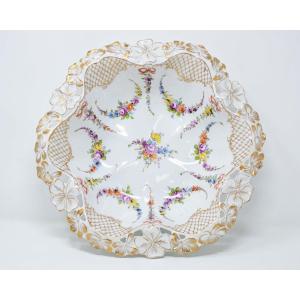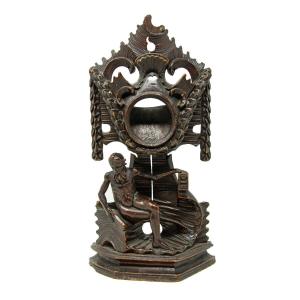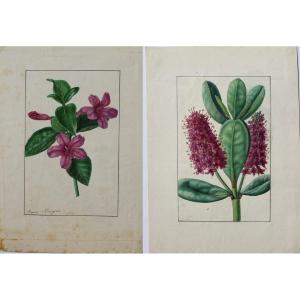Eight views of Milan
(8) tempera on paper
(6) 16.5x21.56 cm - (1) 21.5x16 cm - (1) 17.5x24 cm
In these eight views, of the refined watercolor prints and enclosed in elegant frames of the era, are presented some of the most suggestive views of Milan and its surroundings. The views represent respectively:
1.Porta Comasina, the current Garibaldi gate, a mandatory crossing point for the population of Como and Brianza who went to Milan.
2.The Villa Reale in Milan, also known as Villa Belgioioso or Villa Belgioioso Bonaparte, built between 1790 and 1796 in Milan by the architect Leopoldo Pollack, commissioned by Count Ludovico Barbiano di Belgiojoso, advisor of the Austrian emperor, to retire at the end of their diplomatic and military careers. On the death of Count Ludovico Belgioioso, the villa was acquired by the government of the Cisalpine Republic becoming the residence of Napoleon - who was occasionally hosted during visits to Milan - and of Eugenio di Beauharnais viceré d'Italia in 1805, He lived there permanently with his wife, Princess Augusta of Bavaria. The viceregal couple commissioned the great decorative work that led to the lavish decoration of the interior of the main floor, involving, among others, Andrea Appiani. With the return of the Austrian government to the city, the building became property of the Austrian viceroys, being inhabited among others by marshal Josef Radetzky, who concluded the Peace of Milan in 1849 that decreed the surrender of the city to Austria. After the second war of independence it entered the availability of the Savoy Crown. In 1920 it was bought by the City of Milan, which in 1921 established the Civic Gallery of Modern Art in Milan, which is still today.3.The civic arena of Milan, whose project was elaborated by the famous architect Luigi Canonica under commission from Napoleon in 1805: the area had been designed to host parties, events and celebrations. The shape of the amphitheatre was chosen for the building, as a reference to the Roman imperial tradition, to which Napoleon explicitly referred. Canonica drew inspired by the circus of Massenzio, located outside Rome on the Via Appia Antica, perhaps the best preserved of ancient Roman cirques. The installation was elliptical in shape, with a total length of 238 meters and a width of 116 and could hold up to 30,000 spectators, or just under one quarter of the entire population of Milan at that time. The Canonica’s designed tribune is characterized by the presence of the Appiani building, which took its name from the author of the interior pictorial decoration, Andrea Appiani.
4.The triumphal entrance to the civic arena, with classical forms.
5.Porta Nuova, one of the six main gates in Milan, built along the Spanish ramparts, now demolished. Located in the north of the city, on the Principessa Clotilde square, it opens up along the road to Monza. In this beautiful view the door is presented as connotation of the neoclassical arch of the Zanoia (1810-1813), erected in the Napoleonic era.
6.The columns of San Lorenzo are an ancient building from the late Roman era in Milan, located opposite the basilica of the same name near the medieval Ticinese gate.
7.Porta Ticinese, called Porta Marengo in the Napoleonic era, located south of the city, opened along the road to Pavia. From the nineteenth century, the door is now characterized by the presence of a triumphal arch neoclassical erected on Cagnola’s project.8.The facade of the Certosa di Pavia: this extraordinary monument, built at the end of the fourteenth century by order of Gian Galeazzo Visconti, first Duke of Milan, is the perfect synthesis of the architectural and sculptural trends of the Lombard tradition of the Renaissance.
The city of Milan and its surroundings do not enjoy a great visual fortune compared to other Italian centers such as Florence, Rome or Venice: the first views of Milan are between the seventeenth and eighteenth centuries: These are sketches depicting the most fascinating views of the city, highlighting its religious buildings: We can think of the views of the churches of the churches of San Lorenzo and San Babila of the anonymous Fabricsy and that of the church of San Paolo Converso di Marcantonio dal Re. To provide new life to the visual fortune of the Milanese views is the work of the well-known vedutist Bernardo Bellotto, which depicts, in three excellent canvases, the Cathedral and the Palazzo dei Giureconsulti, the square in front of the churches of Sant'Eufemia and San Paolo Converso and the Sforzesco Castle. The artists who served the Meneghini power in the 19th century present in their works the suggestive glimpses of flourishing Milan, first Napoleonic and then Austrian: just think of the works by Migliara, Canella, Mazzola and Cherubin, In the groove of which our views are perfectly channelled.
The object is in good condition










































 Le Magazine de PROANTIC
Le Magazine de PROANTIC TRÉSORS Magazine
TRÉSORS Magazine Rivista Artiquariato
Rivista Artiquariato